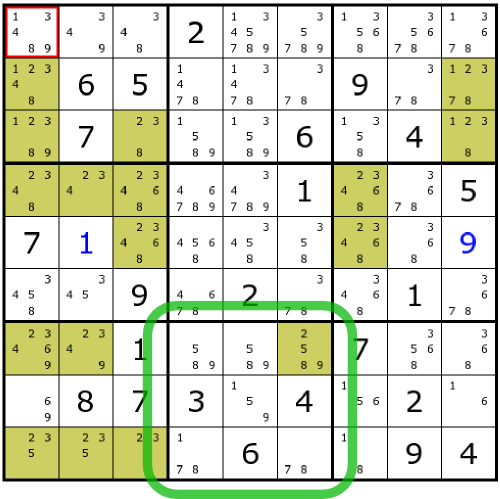Guide to starting a sudoku hobby

Guide to Starting a Sudoku Hobby
Sudoku is a fascinating and engaging hobby that offers numerous benefits for cognitive health, mental agility, and stress relief. As a middle-aged individual, incorporating Sudoku into your daily routine can be a rewarding experience that enhances your mental sharpness and provides a sense of accomplishment. This guide is designed to help you get started with Sudoku, exploring its benefits, strategies, and how to make it a fun and integral part of your lifestyle.

Introduction to Sudoku
What is Sudoku?
Sudoku is a logic-based, number-placement puzzle that consists of a 9×9 grid, divided into nine 3×3 sub-grids or “regions.” The objective is to fill each row, column, and region with numbers from 1 to 9, ensuring that each number appears only once in each row, column, and region .2 .3.
Why Play Sudoku?
-
Cognitive Benefits: Sudoku enhances cognitive functions such as memory, concentration, and problem-solving skills. Regularly solving puzzles can make your brain function like it’s ten years younger than your actual age .2 .11.
-
Stress Relief: Engaging in Sudoku provides a mental break, reducing stress and anxiety .2.
-
Social Engagement: Sudoku can be enjoyed alone or with friends, fostering social interactions and friendly competitions .8.
Getting Started with Sudoku

Step 1: Understand the Rules
Before diving into Sudoku, it’s essential to grasp the basic rules:
-
Each row must contain the numbers 1-9 without repetition.
-
Each column must contain the numbers 1-9 without repetition.
-
Each 3×3 region must contain the numbers 1-9 without repetition .12.

Step 2: Choose Your Platform
You can enjoy Sudoku through various platforms:
-
Printable Puzzles: Websites like Ormond Manor offer free printable Sudoku puzzles, ideal for those who prefer a traditional approach .9.
-
Apps and Online Platforms: Apps like Vita Sudoku provide a user-friendly interface with features like large numbers and smart hints, making it accessible for seniors and beginners alike .13.
-
Books: Collections like “1050+ Brain-Boosting Puzzles for Adults” offer a wide range of puzzles from easy to hard, suitable for all skill levels .10.

Strategies for Solving Sudoku

1. Crosshatching
This involves focusing on each 3×3 region and identifying missing numbers. Then, cross-reference rows and columns to eliminate possibilities .4.

2. Look for Easy Opportunities
Begin by scanning rows, columns, and regions with many numbers already filled in. These areas often provide straightforward opportunities to place additional numbers .5 .6.

3. Pencil Marking
Write down possible numbers for each empty cell. This technique helps narrow down options and avoid mistakes .3 .7.
4. Focus on Patterns
As you gain experience, look for patterns such as naked pairs or hidden pairs. These patterns can help you eliminate possibilities and solve the puzzle more efficiently .3.

Common Mistakes to Avoid
-
Missing Low-Hanging Fruit: Don’t overlook easy opportunities in rows, columns, or regions that are nearly complete .6.
-
Ignoring Squares: Don’t focus too much on one area; explore all parts of the grid for potential moves .6.
-
Not Using Logic: Ensure each move is based on logical deductions rather than guesses .7.

Incorporating Sudoku into Your Lifestyle

Make it a Routine
-
Daily Sudoku: Set aside a few minutes each day to solve a puzzle. This can be during your morning coffee or before bed.
-
Use a Timer: Challenge yourself by setting a timer to improve your speed and efficiency.

Socialize with Sudoku
-
Compete with Friends: Engage in friendly competitions to see who can solve puzzles faster or complete more puzzles in a week.
-
Join Online Communities: Participate in online forums or social media groups dedicated to Sudoku enthusiasts to share strategies and learn from others .8.

Track Your Progress
-
Keep a Sudoku Journal: Record your progress, noting the difficulty levels you’ve mastered and any strategies that work well for you.
-
Use Apps with Progress Tracking: Many apps offer features to track your progress, providing insights into your improvement over time .13.

Conclusion
Starting a Sudoku hobby is an excellent way to enhance your cognitive abilities, reduce stress, and engage in a fun and challenging activity. By following these steps and incorporating Sudoku into your daily routine, you can enjoy the many benefits it offers while sharing the experience with friends and family. Whether you’re solving puzzles alone or competing with others, Sudoku is a rewarding hobby that can enrich your life in numerous ways.

Additional Tips for Middle-Aged Individuals
As a middle-aged individual, you might find Sudoku particularly appealing due to its ability to improve cognitive function and provide a sense of accomplishment. Here are some additional tips tailored to your lifestyle:

Balance Sudoku with Other Activities
While Sudoku is beneficial, it’s important to maintain a balanced lifestyle. Ensure you also engage in physical activities and other hobbies to keep your mind and body active.

Use Sudoku as a Break
Incorporate Sudoku into your daily breaks, such as during lunch or right after work. This can help you unwind and refresh your mind.

Explore Different Difficulty Levels
As you become more comfortable with Sudoku, challenge yourself by moving to more difficult puzzles. This will keep your mind engaged and prevent boredom.

Make it a Family Activity
Involve your family members in Sudoku. Solving puzzles together can be a great way to spend quality time and foster a sense of teamwork.

Frequently Asked Questions
Q: Is Sudoku suitable for beginners?
A: Yes, Sudoku is suitable for beginn







